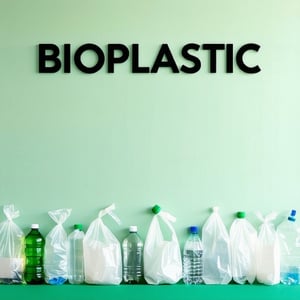In a world flooded with plastic pollution, bioplastics can sound like a promising natural solution. However, the term "bioplastic" or "biopolymer" can be confusing as it is often used interchangeably to mean biobased plastics made from biological sources or biodegradable plastics that break down and disappear in the environment.
It's helpful to define bioplastics more precisely:
Biobased Plastics: Plastics made wholly or partially from biological materials, such as plants, not fossil-based sources. These plastics may or may not be biodegradable, depending on their chemical structure.
Biodegradable Plastics: Plastics that can be broken down by microorganisms into natural substances like water, carbon dioxide, and biomass. Biodegradability depends on environmental conditions and the specific type of plastic.

Conventional plastics are made from oil and non-renewable fossil fuels. Biobased plastics, on the other hand, avoid using fossil fuels for their production. For example, they can be made from corn, sugarcane, seaweed, and other renewable sources. Being non-fossil-based also means they are effective for reducing the CO2 footprint of plastic products compared to using fossil-based plastics.
There exist both degradable and non-degradable conventional and biobased plastics, as shown in the figure above. However, being biodegradable is not a magic wand that makes plastic pollution disappear. Biodegradable polymers will degrade in controlled industrial composting facilities, which have the correct environment with a high number of microorganisms and high temperatures that can aid fast biodegradation. In a home composting situation or if lost to the environment, there is a lower number of necessary microorganisms, lower temperatures, and possibly little UV light and oxygen, causing extremely slow or imperceptible degradation. Even if the biodegradable plastic did degrade, it would create microplastics at some point in the process.
Therefore, biodegradable plastics are as much an unwanted pollutant as conventional plastics if they end up lost in the environment.
Most impactfully, by choosing biodegradable plastic material and designing a product to disappear, you are designing it to be single-use or short-lived before becoming waste. We live in a world of overconsumption and need to take better care of the Earth's resources. The most sustainable materials and plastic products are those that are long-lasting, made not using virgin materials (even if biobased), and can be repaired or recycled at the end of life.


